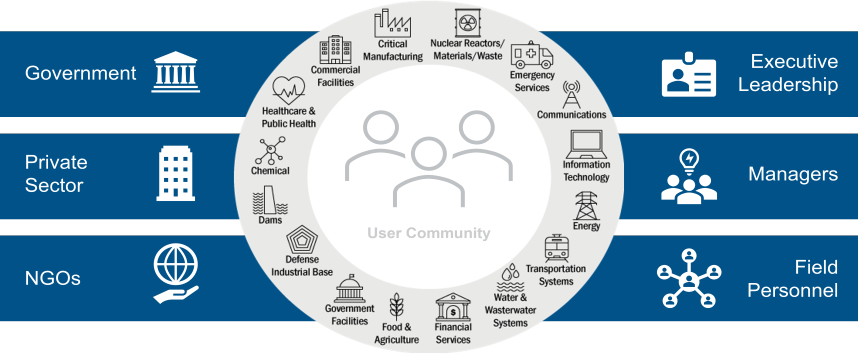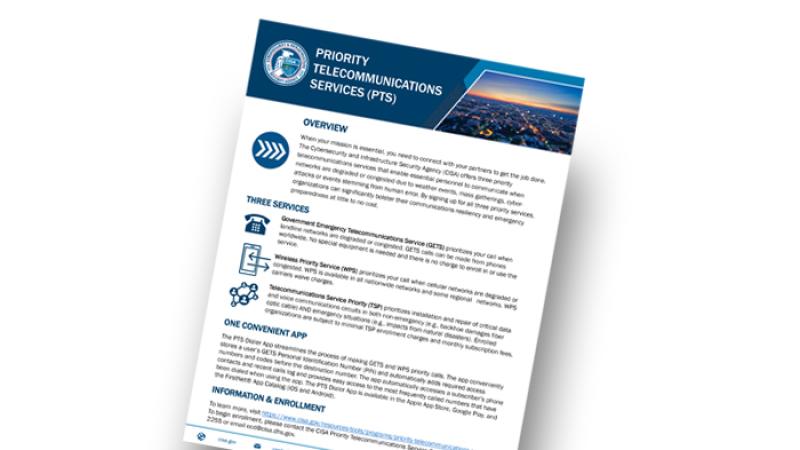
Priority Services
Priority in communications is crucial to continuity of operations when facing adverse conditions such as weather events, mass gatherings, cyber-attacks, or events arising from human error. CISA’s Emergency Communications Division (ECD) promotes communications used by emergency responders and government officials. ECD responds to adversarial and hazardous events as one unified team.
CISA offers three Priority Telecommunications Services (PTS) that enable essential personnel to communicate when networks are degraded or congested:
- Wireless Priority Service (WPS) for wireless voice communications
- Government Emergency Telecommunications Service (GETS) for wireline voice communications
- Telecommunications Service Priority (TSP) for repair and installation of organizations’ critical voice and data circuits
Our goal, as a unified team, is to see that everyone who qualifies has access to these services.
This suite of offerings is available to all personnel, from executive leadership to field personnel, with national security and emergency preparedness (NS/EP) functions:
- All levels of government (federal, state, local, tribal, territorial)
- Non-governmental organizations (NGOs)
- Organizations within the 16 U.S. critical infrastructure sectors

Priority Telecommunications Services
Your Communication is the Priority: When you get a "busy" or an "all circuits are busy" tone, using GETS or WPS helps get your call through to its destination.

Wireless Priority Service (WPS)
WPS is a cellular communications service that provides authorized devices with priority calling on all nationwide regional networks.

Government Emergency Telecommunications Services (GETS)
GETS is an emergency telephone service that provides subscribers with priority access and prioritized processing in the local and long-distance segments of landline telephone networks.

Telecommunications Service Priority (TSP)
The TSP program mandates that service providers prioritize voice and data circuits provisioning and restoration requests made by organizations with national security & emergency preparedness missions.
Related Resources

Priority Telecommunications Services Documents
WPS/GETS Documents
TSP Documents
Contact
Priority Telecommunications Service Center
The Priority Telecommunications Service Center is the first resource for assistance with Priority Services, from enrollment to account management. For more information on GETS, WPS, or TSP, please contact CISA’s Priority Telecommunications Service Center:
- By phone: 1-866-627-2255
- By email: support@gwids.cisa.gov
The Service Center team is available Monday-Friday, from 8:00 AM ET until 6:00 PM ET.
24-hour technical support and emergency assistance is also available from the User Assistance team at 800-818-4387.
Login to GWIDS
Existing customers and participants can access the Priority Telecommunications Services portal, GETS/WPS Information Distribution System (GWIDS).






